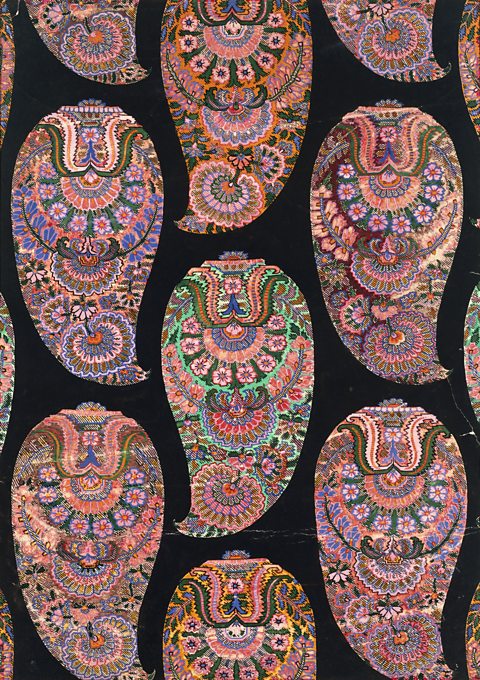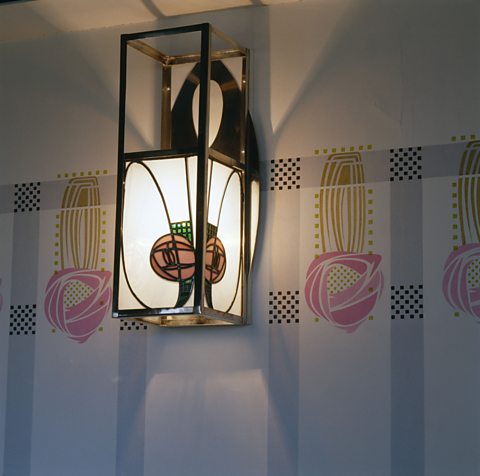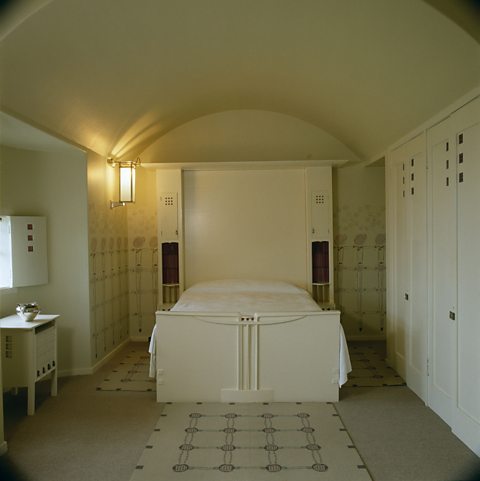Motifs
The starting point of any pattern is the single element that will be repeated. This is called a motifAn image, design or idea that is repeated in a work of art or design. The basic unit that is repeated to create a pattern.. A motif can be repeated and arranged in many different ways in order to create different types of pattern.

This textile design by George Hait├ę (c 1850) is based on a twisted teardrop shape motif typical of a Paisley pattern.
This shape, called a buta, dates back to ancient Persia but became popular in the west in the 18th and 19th centuries.
Here the motif is mirrored - sometimes it twists to the left, sometimes to the right. The colours change creating different versions of the buta, but it is always recognisable as the same motif.


The drawing room of Hill House (Charles Rennie MacKintosh, 1902-04) features a rose motif that has been repeated to create a border round the room.
A very similar rose motif has been used in the wall light to link these two features into one interior design.


A series of motifs within the bedroom of Hill House(Charles Rennie MacKintosh, 1902-04) are used to a similar effect.
Again, a rose motif and a repeat of simple squares are used to unite different elements of the room, and to link this room to the design of other rooms in the house.
